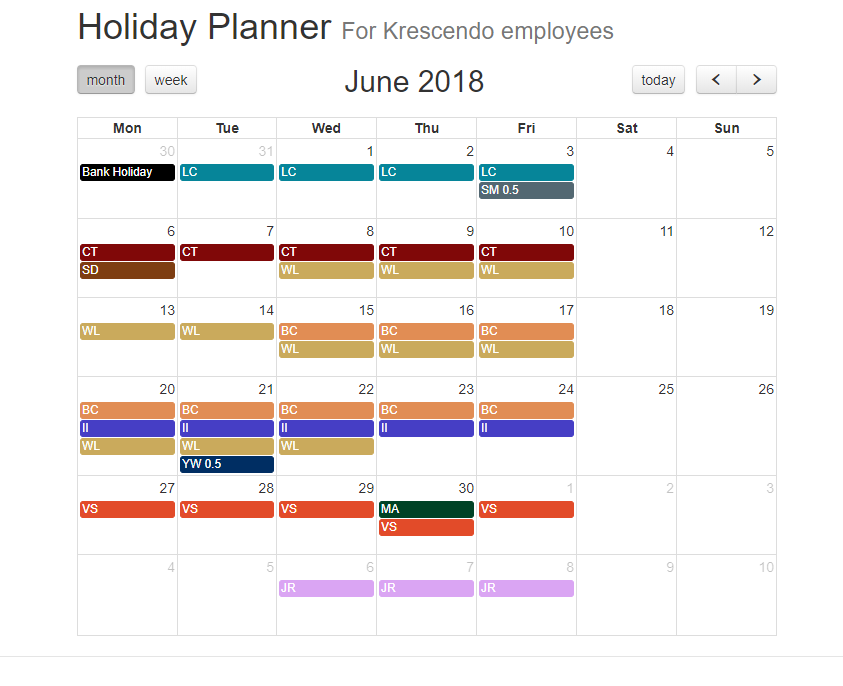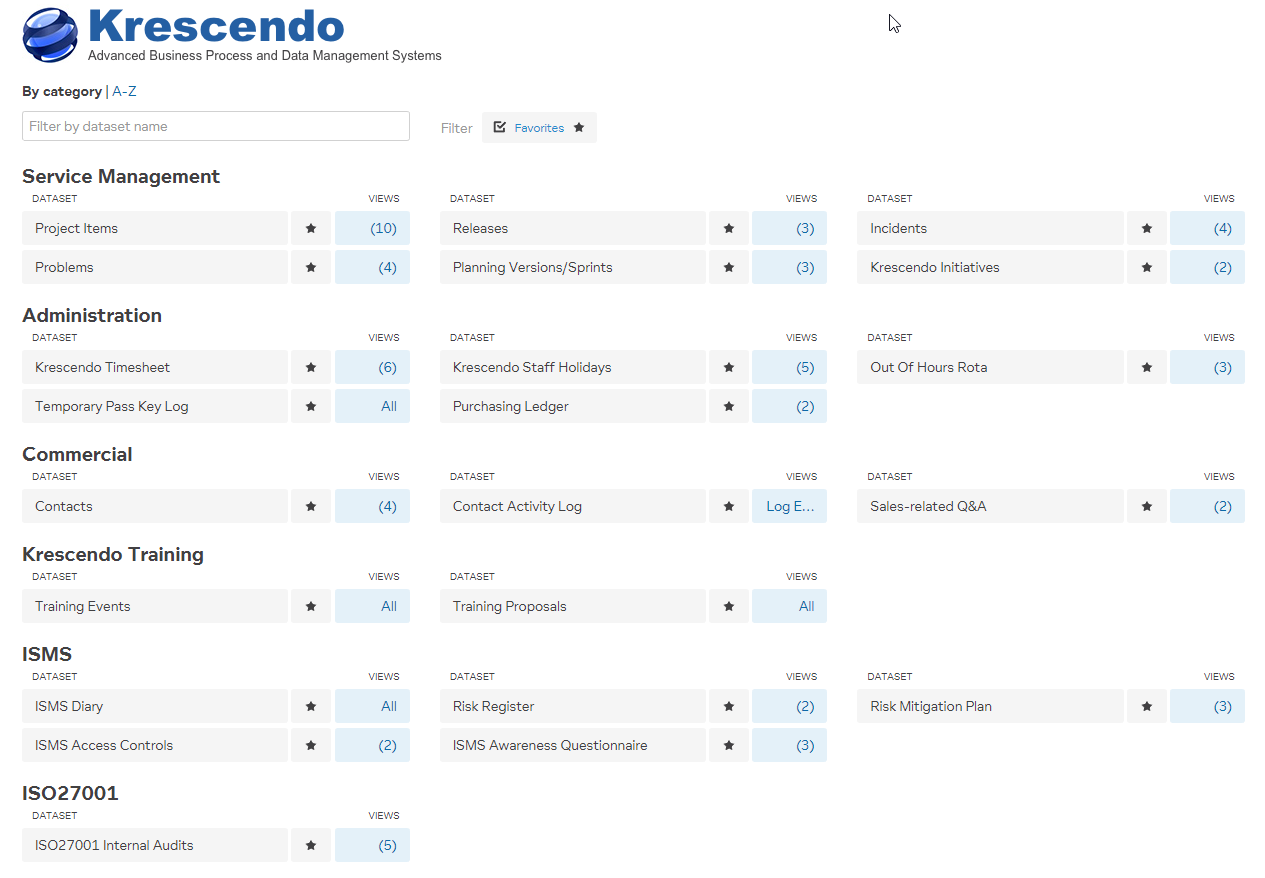How Dogfood (and Champagne) Helps Make LiveDataset Better

As Krescendo’s first Operations Manager, I had to set up a new holiday management process once we’d outgrown stickers on a wall chart. We started off with the project managers sending me approved holiday requests and I would put them in a spreadsheet on the network drive.
Everything was all in order, but the trouble came as soon as anyone had any questions. For example, they’d need to speak to me to find out how many days’ holiday someone had taken, or how many people had booked holiday on a given date.
It never really seemed a big enough problem to spend money and time on a specialist solution. That said, it could still be quite time-consuming to keep up with incoming requests and queries from colleagues. A traditional approach for a manager in this situation might be to delegate the admin to a more junior colleague, but this just moves the effort and lacks the control that was desired in the first place.
I saw an opportunity when the first version of LiveDataset was released internally and our development team were looking for ways to put LiveDataset through its paces. Given a couple of hours work, I set it up to manage the holidays and control the access. The other managers could mark their approval on requests themselves, and I could let all the team see their own holidays. I would only be needed to oversee things. Less effort, more control, better visibility — an improvement all round!
Why is This Called Dogfooding?
Imagine you worked for a company that wanted to make sure it makes the tastiest dinner for dogs. The best way to do this is not just by seeing how the dogs react, but you actually taste it yourself. You would “eat your own dogfood”. (Apparently, the French refer to this as “drinking your own champagne”, which is perhaps more appealing, but Dogfooding remains the popular term.)

Dogfooding works. We get a much better solution for holiday management. Everyone in the company gets to use LiveDataset for real. And the development team get invaluable feedback as we configure and use it for ourselves. There have been several times when have found better ways to get stuff done using LiveDataset because of our practical hands-on experience.
Holiday admin doesn’t take up much of my time anymore and we’ve improved the process to the extent that one of our team used the API to make a calendar widget that sits on our intranet. Now we can all see who’s out the office at a glance.

We’ve since set up many more processes for our day-to-day operations. It’s not just the fiddly admin jobs either — it’s also the critical jobs that many people often buy software for. We replaced our old service management tool with LiveDataset, to manage all our Releases, Incidents and Problems. These are robust implementations, too. We can do all the important things like linking all the data for a given initiative together and tracking release approval — all in a centralised place, which is permissioned, audited, and customised just how we like it. We even set up a process to manage all the development sprints — we use LiveDataset to build LiveDataset.
I still go straight to LiveDataset whenever we need to collate, store or share data. When I needed to create an organisation process for our Out of Hours coverage, I set up a solution in half an hour which allows the team to communicate changes directly with each other, while allowing us all to create a plan that everyone can see as it happens. (Try doing that on a spreadsheet!)
Even if not doing it to consciously “eat our own dogfood”, we still very much enjoy using LiveDataset ourselves. It helps us learn what is important in the product and spot areas for improvement. It means we can effectively help clients with the best approaches when using LiveDataset, because we’re doing it too. Not to mention we have a great tool to hand that helps keep us productive.
Example of areas where Krescendo uses LiveDataset:
- Service management (incidents, problems, changes)
- Development schedules
- HR administration (holidays, timesheets, resource forecasting, training records)
- Security logging
- Purchase approvals & cost tracking
- Commercial & sales tracking
- ISMS auditing & monitoring
- Risk assessment & risk mitigation registering
- Asset management
- Infrastructure & network record keeping
- Vendor & software licence management
- Organising company and social events

How Are You Using LiveDataset?
We always love to hear how people use LiveDataset, please let me know at info@livedataset.com.
